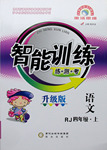题目内容
145. The nation was reunited and the slaves were ______ when the North won the Civil War in American history.
| A.escaped | B.set free | C.set freedom | D.set out |
B
解析

练习册系列答案
 智能训练练测考系列答案
智能训练练测考系列答案
相关题目
题目内容
145. The nation was reunited and the slaves were ______ when the North won the Civil War in American history.
| A.escaped | B.set free | C.set freedom | D.set out |
B
解析

 智能训练练测考系列答案
智能训练练测考系列答案